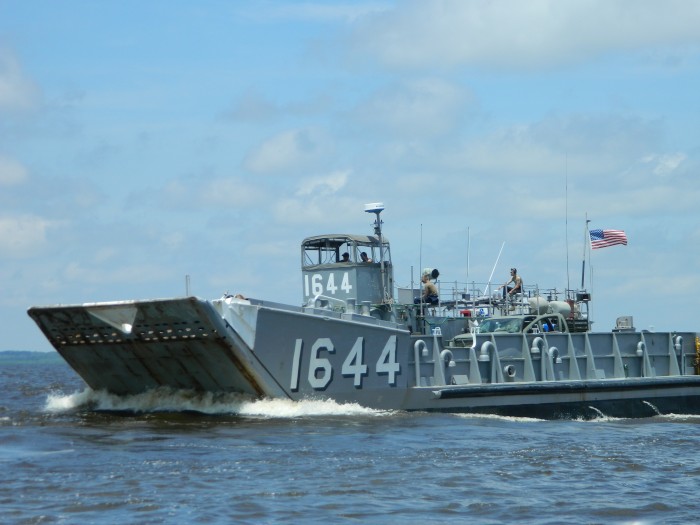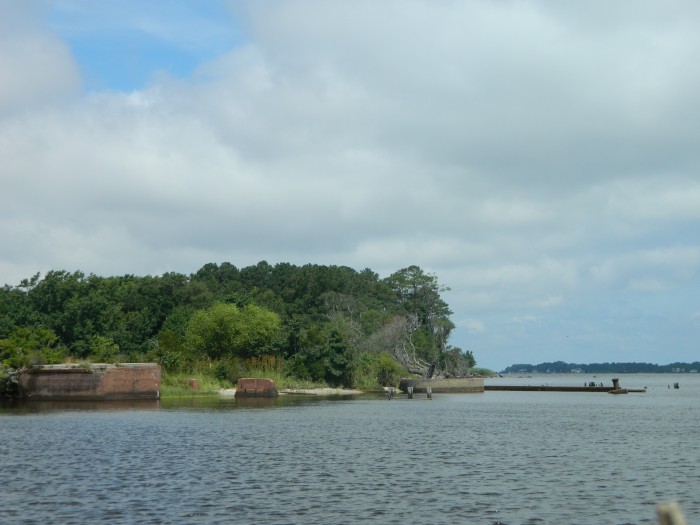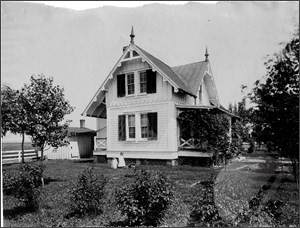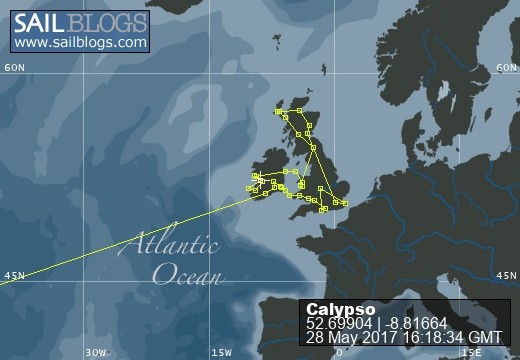
Log of Calypso
13 February 2023
08 February 2023
08 February 2023
04 February 2023
06 August 2022
01 August 2022 | Stonehaven, Scotland
28 July 2022
26 July 2022
25 July 2022
22 July 2022 | Edinburgh, Scotland
21 July 2022 | Glasgow
19 July 2022 | Edinburgh Scotland
19 July 2022
10 July 2022
10 July 2022
25 June 2020
03 June 2019
03 May 2019 | Charleston, SC
01 May 2019 | Brunswick, Ga
27 March 2019 | Palm Coast, Fl
Mysteries of the Waterway
07 July 2017 | Anchored in Blackwater Creek, Va

Stowaway!
Thursday morning, as we left our quiet anchorage we were surprised when we realized we had company. Not one but two tree toads. We haven't been pier-side for a week and they probability didn't swim. As long as they stay topside and eat mosquitos and spiders, they can stay, but were they came from will remain a mystery.
In 2016, Hurricane Matthew became the first Category 5 Atlantic hurricane since 2007. This devastating hurricane caused widespread damage ($15 Billion) and loss of life (603 deaths) as it travelled through the Caribbean and eastern United States.
Damage from Matthew closed the alternative route of the Intercoastal Waterway (ICW) via the Dismal Swamp Canal. A favorite for us and many other boaters, debris, fallen trees, and damage to one of the locks closed the canal, indefinitely. Only a large public appeal saved this historic waterway, originally surveyed by George Washington. We look foreword to exploring it again, on our way south.
Until then, our ICW route north is through Currituck (Ker-a-tuck) Sound. This route, although shallow, is busy with commercial, military, and recreational boat traffic. There are several protected and secluded anchorages and even a few other mysteries, too!

On NOAA charts, this pile of brick at the waters edge is classified as "ruins". That's what it is now, but in 1879 it was part of Long Point Beacon Light (No. 8). One of 17 NC light stations along the coast in the late 1800's & early 1900's.

The station was retired in 1901 the only picture that remains is this of the Keeper's Home, taken by an unknown photographer June 19, 1893. Later, during World War II, the island later served as a refueling station for seaplanes for the Coast Guard.

In February 2015, two local historians worked to shed some light on these ruins located on this 56 acre island. These historians wanted to prove that operations on Long Point Island produced Pintsch gas.
Developed in 1851 by a German Tinsmith, Carl Pintsch, the gas is a compressed fuel with six times the illumination power of lamp oil. It's ability to burn brighter and longer than standard oil lamp was intended for lighting the lamps in locomotives.
The properties of Pintsch gas also made it a popular solution for illumination of bouy and unmanned lighthouses. This would allowed them to remain lit for months, without servicing. The down side was that this gas was highly explosive and after several railway disasters it's use was ended.
With little historical information to go on the researchers are left with more questions than answers. For them, the final dead end came from the U.S. Coast Guard Historian saying, that "virtually no information exists regarding Long Point Light."
Was this the site for the beginning of automation for AIDS to Navigation? Why is there no record? Was there a mishap? Believing it would be hard for even Glen Beck to find a conspiracy theory here, but it will remain one of the many mysteries of the waterway.
Fair Winds and Quiet Anchorages,
Wendy & Jeff
Thursday morning, as we left our quiet anchorage we were surprised when we realized we had company. Not one but two tree toads. We haven't been pier-side for a week and they probability didn't swim. As long as they stay topside and eat mosquitos and spiders, they can stay, but were they came from will remain a mystery.
In 2016, Hurricane Matthew became the first Category 5 Atlantic hurricane since 2007. This devastating hurricane caused widespread damage ($15 Billion) and loss of life (603 deaths) as it travelled through the Caribbean and eastern United States.
Damage from Matthew closed the alternative route of the Intercoastal Waterway (ICW) via the Dismal Swamp Canal. A favorite for us and many other boaters, debris, fallen trees, and damage to one of the locks closed the canal, indefinitely. Only a large public appeal saved this historic waterway, originally surveyed by George Washington. We look foreword to exploring it again, on our way south.
Until then, our ICW route north is through Currituck (Ker-a-tuck) Sound. This route, although shallow, is busy with commercial, military, and recreational boat traffic. There are several protected and secluded anchorages and even a few other mysteries, too!

On NOAA charts, this pile of brick at the waters edge is classified as "ruins". That's what it is now, but in 1879 it was part of Long Point Beacon Light (No. 8). One of 17 NC light stations along the coast in the late 1800's & early 1900's.

The station was retired in 1901 the only picture that remains is this of the Keeper's Home, taken by an unknown photographer June 19, 1893. Later, during World War II, the island later served as a refueling station for seaplanes for the Coast Guard.

In February 2015, two local historians worked to shed some light on these ruins located on this 56 acre island. These historians wanted to prove that operations on Long Point Island produced Pintsch gas.
Developed in 1851 by a German Tinsmith, Carl Pintsch, the gas is a compressed fuel with six times the illumination power of lamp oil. It's ability to burn brighter and longer than standard oil lamp was intended for lighting the lamps in locomotives.
The properties of Pintsch gas also made it a popular solution for illumination of bouy and unmanned lighthouses. This would allowed them to remain lit for months, without servicing. The down side was that this gas was highly explosive and after several railway disasters it's use was ended.
With little historical information to go on the researchers are left with more questions than answers. For them, the final dead end came from the U.S. Coast Guard Historian saying, that "virtually no information exists regarding Long Point Light."
Was this the site for the beginning of automation for AIDS to Navigation? Why is there no record? Was there a mishap? Believing it would be hard for even Glen Beck to find a conspiracy theory here, but it will remain one of the many mysteries of the waterway.
Fair Winds and Quiet Anchorages,
Wendy & Jeff
| Vessel Name: | Ex-Calypso |
| Hailing Port: | Morehead City, NC |
| Social: |
Port: Morehead City, NC


